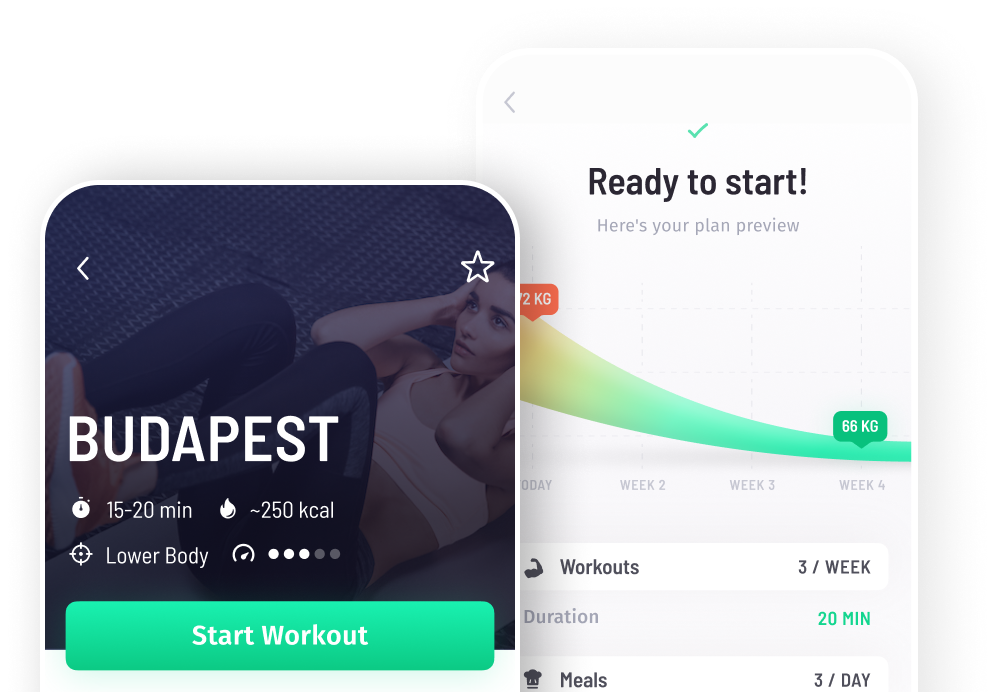Intermittent fasting has become a buzzword, with lots of health professionals recommending the approach for weight loss. Other purported benefits include a reduced risk of chronic illnesses such as heart disease and diabetes, lower levels of inflammation, possible increase in life span, and a boost in mental wellbeing.
But why is the title of this article 'intermittent fasting for women?' Why women, specifically? Because there is evidence to show that intermittent fasting can have undesired effects on female hormone production, menstrual cycle, and fertility.
That isn't to say intermittent fasting for women should be avoided. Women can employ this useful lifestyle technique and enjoy the benefits of fat loss without counting calories or macronutrients, and a reduced risk of chronic diseases. They merely have to adapt the method to suit their physiology.
What is Intermittent Fasting?
Intermittent fasting (IF) is a way of organizing your eating times so that you eat fewer calories overall throughout the day. It includes periods of fasting, during which you take in no solid foods and eating windows when you consume a healthy balanced diet.
The benefit of IF is that you don't have to count calories, grams of fat, protein, or carbs like most other diets require. Although technically you can eat whatever you want during the eating windows, health professionals recommend you stick to a healthy balanced diet to ensure maximum nutrient intake and best results.
Best Intermittent Fasting Schedules for Women
As there is some evidence to show that women's bodies do not respond well to extreme calorie restriction, the safest way to do IF for women is to fast for fewer hours at a time so that the risk of adverse effects is lower.
Here are the three best intermittent fasting protocols for women, in order of difficulty:
1: The 5:2 Method
The 5:2 method involves eating a healthy balanced diet in line with your recommended macro and calorie intake for your gender, age, and BMI five days a week. You reduce your caloric intake to 25% (400-500 calories usually) for the remaining two days. An example 5:2 routine:
- Monday - normal
- Tuesday - 400 calories
- Wednesday - normal
- Thursday - 400 calories
- Friday-Sunday - normal
2: The Crescendo Method
The crescendo method is an easier version of the 16/8 method (below). On the crescendo, you fast for 12-16 hours, 2-3 days per week. It sounds harder than it is because some of those hours are during the night. When you're sleeping, you're fasting anyway, so there's no change. An example schedule fasting 16 hours, two days a week (assuming you wake at 6am) would be:
- Monday
6am-10am - fasting
10am-6pm - eating
6pm-bedtime fasting
- Tuesday
6am-10am - fasting
10am-bedtime - eating
- Wednesday
6am-10am - fasting
10am-6pm - eating
6pm-bedtime - fasting
- Thursday
6am-10am - fasting
10am-bedtime - eating
- Friday-Sunday
No restrictions
3: The 16/8 Method
On the 16/8 method, you fast for 16 hours a day and have an eight-hour eating window. This pattern happens every day. You schedule your eight-hour eating window to begin four hours after you wake up. So if you wake at 6am like the example above, you eat all your meals between 10am and 6pm. If you are new to intermittent fasting, you should try the 5:2 or crescendo methods first.
Intermittent Fasting Side-Effects
In addition to the possible adverse effects mentioned above, there are some others to consider. Although not usually serious, potential intermittent fasting side-effects include:
- Mood swings
- Headaches
- Bad breath
- Hunger
- Lack of focus/brain fog
- A decrease in energy and motivation
- Amenorrhea
It is also prudent to mention that women seeking to become pregnant, women who are pregnant, and those still breastfeeding should consult their doctor before attempting any change in dietary habits. The same advice goes for anyone who has a pre-existing medical condition, or a history of eating disorders or other mental health issues.
Did you enjoy this article? Share it!

